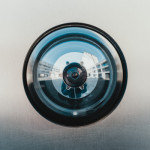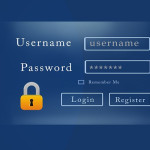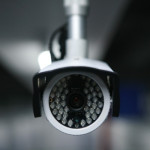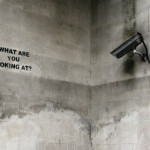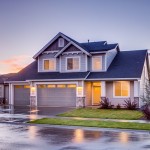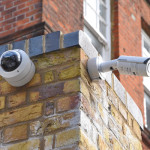Protect Your IP Surveillance System
These days, IP security cameras are much easier to use and are more commonly utilized for home security. Whether home owners want to watch their property or their pets, IP security cameras seem to be the surveillance solution of choice.
Unfortunately, these home security systems are often targeted by hackers and bots. To better safeguard your IP cameras and privacy, check out these helpful IP security camera tips.
Update Firmware
Modern IP security cameras provide user-upgradeable firmware. When a security vulnerability is found, the manufacturer will fix it by issuing a firmware update. If your cameras are operating with an older version, they may be vulnerable to exploitation from hackers or online voyeurs. Always be sure that your firmware is up to date and routinely check for updates to protect your system.
Keep Cameras Local
The concept is simple – If you are worried about your live feed ending up on the internet, do not connect your cameras to the internet.
To protect your privacy, keep your security cameras on a local network and assign them non-routable internal IP addresses (ex. 192.168.0.5 or the like). But even then, your cameras may still be exposed by camera software that sets up port forwarding or uses UPNP to expose your cameras to the internet. Make sure your cameras are set up on local-only mode – consult your installer or check the manufacturer’s website to learn how.
Assign Passwords To Cameras
All too often, users forget to add password protection on their IP cameras, and sadly, this is not usually turned on by default. Without this, IP cameras are left wide open and vulnerable.
Luckily, most cameras offer at least some form of basic authentication, and although it may not be much, it is better than nothing. Remember to protect your cameras by assigning a username and strong password and changing it periodically.
Change Defaults
We cannot stress this enough – Always, always, ALWAYS change the default usernames and password for your devices. In case you didn’t know, the default admin name and password for your IP camera is usually available on the manufacturer’s website in the support section. That said, if you don’t change these defaults, anyone could potentially access your security system, view your feeds, and control your cameras.
WPA2 Encryption
If you’re using a wireless camera, you should only connect it to a WPA2-encrypted wireless network. This will minimize the risk of wireless eavesdroppers connecting to your network and accessing your video feeds.
Be Mindful Of Locations
Don’t place IP security cameras in areas of your home that you wouldn’t feel comfortable with strangers seeing. Regardless of the security measures to protect your camera feeds, there is always a possibility of getting blind-sided by a Zero-Day vulnerability that hasn’t been found by the manufacturer yet.
Share your own tips and experiences with us on Facebook, Google+, Twitter, LinkedIn, and Pinterest. For a wide selection of IP security cameras and more, visit SecurityCamExpert.com or call 888-203-6294 today!
Avoid These Common Security Camera Mistakes
Whether you rent or own your home, you want to make the property as unattractive as possible. Things like outdoor lighting, guard dogs, alarms and security systems act as deterrents for would-be burglars and trespassers. Unfortunately, common mistakes can weaken your security measures. Discover the most common security mistakes and ways to avoid them.
- Mistake: Hiding Security Cameras
Although they may take away from your home’s aesthetic, your security cameras should be visible from the street. One of the benefits of security cameras is that they act as a deterrent for burglars. By hiding your cameras, you negate that benefit. And even if they do not succeed at discouraging thieves, you will have video footage that can help to identify the trespassers.
But remember, you want the cameras to be visible, but also out of reach to prevent tampering and vandalism. A sign warning that your property is under surveillance can also help.
- Mistake: Camera Positioning/Locations
Choosing the right locations for your security cameras may seem easy, but there are lots of factors to take into account. Security cameras should be able to provide proper coverage around the clock. You need to consider direct sunlight in the afternoon, which can washout the footage, or how things such as rain, snow, or tree branches, may compromise the field of view and produce unusable footage. In addition, internet-connected smart cameras need to be installed where there is strong and consistent Wi-Fi signal.
Keep your camera in a sheltered area that’s in the shade all day. You may even want to invest in camera housing for added protection. Also, test your live feed in a variety of weather conditions to ensure your cameras produce usable footage in all situations.
- Mistake: Buying Cheap Systems
While low-priced systems may seem appealing, often times you get what you pay for. These systems may not come with the special features you want or need, but if budget constraints limit your options, something is better than nothing. However, if you have a more flexible budget, you should be sure your basic needs are met.
The most important takeaway: do your research. Read reviews and users’ feedback, search online for examples of the video output, and look into warranties and technical support should you need it in the future. You should trust that you are investing your time and money into a quality camera that will satisfy your surveillance needs.
- Mistake: Not Changing Passwords
When you have an internet-connected system, you are able to access your feed remotely. A default username and password are used for the initial access. A common mistake is that users do not change these default username and passwords, which are usually available on the manufacturer’s website. Hackers know this and if you fail to change these, they can gain access to your feed. From there, they can learn about your daily routines and get an idea of the layout of your home.
It is strongly advised to change the defaults as soon as possible and create a password that is unique, but that you can remember.
- Mistake: DIY Installations
Professional installation can help you avoid many of the aforementioned mistakes. They will choose appropriate locations for your cameras based on your needs and the environmental factors. If your cameras aren’t functioning properly, they will come back to fix the issue and most companies will offer a warranty. If you opt for a DIY installation, you are responsible for any issues that arise.
Need help finding the right security system for you? Choose SecurityCamExpert.com! We can guide you through the process of choosing the security cameras that will best suit your needs. If you are in Southern California, we can even install the system for you. Visit us online or call 888-203-6294 to learn more. You can also connect with us on Facebook, Google+, Twitter, Linkedin, and Pinterest.
Night Vision Security Camera Tips
Burglars often like to creep in the dark night in hopes of being undetected. This is precisely why night vision security cameras are so important. But keep in mind that the value of night vision cameras is directly connected to their effectiveness and performance. To employ the best night vision surveillance system, keep these things in mind.
- IP Power
Remember that all IR CCTV cameras have a quoted maximum range. For example, these can range from 5m to 50m or longer. This range is the absolute maximum, meaning at these extremes, your image quality will not be its best. Measuring how far you need to see and then adding a third of that is recommended. For example, if you need to see 30m, it may be advised to invest in a 40m camera.
On the other hand, you don’t want the IR to be too powerful either. Most CCTV cameras cannot adjust the IR brightness, thus, if a subject is too close to a camera designed for long ranges, it will simply look too bright and/or washed out.
- Wide Angle Lenses
IR LEDS are designed to brightly illuminate the center of an image, therefore, most of these cameras will not have a very wide angle of view. While this is not a common problem, some cameras will have varifocal lenses that can zoom out. With these, be aware that at the wide end of the zoom, the corners of your image will not be covered by night vision.
- Field Of View
For all security cameras, you want to be sure that the field of view is clear of obstructions, but this is especially important for IR CCTV cameras. If there is something like a branch or leaves in the frame, the LEDs will focus on these and they will be brightly lit. The rest of the image will be made darker in order to compensate, thus rendering the image is useless.
- Reflection For IR
In order for night vision cameras to work, IR needs something to reflect off of. When users point a camera into an empty field, they may be alarmed when there is nothing but darkness and may assume the night vision is not working, but this is not the case. When a subject moves into range, the IR can reflect off of it, and thus, the subject will be visible.
- Mounting Height
Keep the height at which your cameras will be installed in mind when you are considering the power of your night vision. This is especially important when installing cameras above ground floor height. For example, if your car is parked 4m away from your house, and your camera is mounted 3m from the ground, the actual distance from camera to car is 5m.
Share your own night vision camera tips with us on Facebook, Google+, Twitter, LinkedIn, and Pinterest!
For a great selection of night vision security cameras and surveillance equipment, visit SecurityCamExpert.com or call 888-203-6294 to speak with us directly.
Security Cameras: Common Positioning Mistakes
When security cameras are installed and positioned properly, they can provide effective security and video footage to protect your property. However, simple mistakes when implementing a security system can negate its effectiveness. To maximize your security systems performance and efficiency, be sure to avoid these common security camera mistakes.
- Multitasking
Try not to assign too many tasks to a single camera, as these will likely be executed poorly. Choose a single goal, such as capturing a face, a license plate, or general coverage, and optimize the placement and settings for that goal.
- Height
While the highest point of your property may seem ideal to capture a wide viewing range, it will not provide detailed images for identification. You want to place cameras high enough to deter tampering and vandalism while still finding a balance between the ultimate goal, the effective range, and number of cameras you are employing. This is why careful planning and calculations are crucial.
- Wide Dynamic Range
Doorways and windows are prone to an imbalance of light distribution, and, therefore require Wide Dynamic Range (WDR). Without it, you may not be able to capture a decent image unless the camera is in the proper angle or the person looks directly into the camera. Be sure to choose the right features for the appropriate locations and environment.
- Fixed Vs. PTZ
Because of their abilities, PTZ (Pan/Tilt/Zoom) cameras tend to be more appealing to customers. The problem is that after taking advantage of the features, the camera is hardly ever returned to its “home” location, and thus, is left focusing on less important areas. While they can be helpful tools in various situations, PTZ cameras are better used in conjunction with fixed cameras. That way, fixed cameras will always be focused on the key areas while the PTZ cameras can monitor the surrounding areas or points of interest as necessary.
- DVR/NVR Placement
Protecting your equipment is ever important, but sometimes, users leave the central brains of the systems as an afterthought. Be sure that the placement of your DVR/NVRs is both secure and efficient for your system.
- Lighting
You need to consider lighting, especially if you need to capture video overnight. Aside from night vision, be mindful of the available light in your camera locations. Be sure not to mount cameras too close to bright lights, which can disrupt the view.
- Masking High Traffic
It is important to adjust and program each device for a maximum balance of capturing required information and maximizing storage returns. If this is neglected, you may cause your DVR/NVR to shorten, thus limiting video retention.
- Proper Retention Calculation
Choosing a system that does not allow for customization of video retention time will limit your security system’s flexibility. Instead, look for systems which will allow you to modify your storage options based on your individual needs.
Build your ideal video surveillance system with us! Visit SecurityCamExpert.com to browse our stock or call 888-203-6294 to discuss your options. You can also connect with us on Facebook, Google+, Twitter, LinkedIn, and Pinterest.
Home Security Mistakes & Tips
Making mistakes when it comes to your home security can compromise your safety, leaving you vulnerable to burglary and theft. When choosing the best home security system for you, avoid making these common security mistakes and ensure that you properly safeguard your home and loved ones.
Mistake: Buying The Wrong Home Security Systems.
There is no “wrong” home security system, however, what works for one person may not work for you. This is precisely why there are various types of security systems on the market.
In order to choose the best system for you, do your research. You want to look at different reviews from reputable sources. Search the security system you are eyeing, or the type of system you’re looking for. In addition to reviews, pay attention to any complaints from real buyers that you may come across. There may be legitimate issues that you should know about before making a purchase.
Also, these are some important features you should consider when shopping for a security system:
- Remote monitoring
- Real-time notifications
- 911 & emergency services
- Input capacity
- Ease of installation
Lastly, to help you make the right decision, and possibly save you time, you should speak with a security professional. With expert knowledge and experience under their belt, a security professional will have a better idea of which type of security will best suit your needs.
Mistake: Not Testing Your Configurations.
It is rare that one home security system is enough for all your home security needs. For added protection, some components to consider may include:
- Indoor and outdoor cameras
- Motion sensors
- Smoke detectors
- Carbon monoxide detectors
- Glass break detectors
- Door and window sensors
- Freeze sensors
- Water sensors
- Driveway sensors
Of course, these are just some of the many components you may or may not want to add to your system. Whether you have one security camera or 20 different cameras and sensors, you should test all of them to ensure proper configuration and performance. For example, you may not know that your camera is poorly positioned or that your alarm system was not properly activated.
Try simulating a break-in with a friend, family member, or your pet to determine the capabilities of your home security system. Most criminals are seasoned vets so they probably know how to bypass one of more components of your system, thus having more aspects can help to ensure they are stopped.
Mistake: Lack Of/Poor Maintenance Of Home Security System.
Your security system should be maintained on a regular basis, whether it’s weekly, monthly, semi-annually or annually – do what’s best for what you need. Maintenance can involve various things such as updating software, changing batteries, changing faulty or defective parts, and more.
Professional Maintenance
Professional maintenance can be done annually or semi-annually. You may want to check if your vendor offers any maintenance packages in the service contract. If they don’t, you can enlist the services from a home security inspection company.
The services typically consist of the following:
- Repair or replace broken parts of your home security system
- Test the control panel and all other components of your home security system
- Check that signals are sent to and received by the monitoring center
Professional maintenance ensures that there’s no guesswork in handling, fixing or replacing faulty components of your system.
DIY Maintenance
Your DIY checklist should include:
- Check/change exterior lighting to ensure clearer pictures or videos for your surveillance cameras
- Simulate intrusion to check if motion sensors will detect it or trigger the right alarm
- Test your control panel if it has a test model but if your system includes remote monitoring (which it should), inform the monitoring team to avoid starting a false alarm
- The National Fire Alarm Code requires annual inspection of residential household fire systems, but you can press the test button of your smoke detector to see if it’s functioning properly from time to time
Keep these tips in mind in order to avoid these critical mistakes when shopping for a home security system.
If you’re looking for quality CCTV surveillance systems and security cameras for smart prices, feel free to browse our stock online at SecurityCamExpert.com or call 888-203-6294 to speak with an expert today! Find the latest news and updates on our Facebook, Google+, Twitter, LinkedIn, and Pinterest pages.
Home Security Camera Placement Tips
When it comes to security camera systems, you can invest in the best, most advanced equipment, but choosing poor locations for your security cameras can render your system ineffective.
In order to choose the best placement for your surveillance cameras, you should consider the layout of your property and which areas need monitoring. Most home or business owners target high traffic areas and entryways.
Here are more helpful tips for installing your security cameras.
- The most commonly targeted entryways are the front door, back door, and first-floor windows, so be sure these are under video surveillance.
- In addition, a security camera at the front door can act as a digital peephole since you can access your live feed to see who’s at the door. You can place it above the door or window frame facing downward so that it covers the area a few feet in front of the opening. Or you can place it inside your home on the window sill overlooking the front yard.
- The type of camera will also help determine where it should be placed. Surveillance cameras with a focus range of around 45 to 75 degrees should be aimed at specific areas (ex. doorway, garage). Wide angle cameras should be placed where they can view 75 to 180 degrees without any obstructions. For security cameras that can rotate, be sure to check with the manufacturer for information on how much unobstructed viewing area is necessary.
- For surveillance cameras being installed outdoors, be sure they are waterproof, vandal proof, and have night vision capabilities in order to record overnight. Motion detection lights around the perimeter of your home can also help capture quality recordings as well as deter burglars from approaching.
- In addition, when placing security cameras outdoors, you want them to be visible yet out of reach. By installing them at least 9 feet above the ground, you decrease the likelihood of tampering, vandalism, or theft of your cameras.
Do you have any security camera placement advice or tips to share? Connect with us on Facebook, Google+, Twitter, LinkedIn, and Pinterest.
Shop our great selection of quality CCTV security cameras and surveillance systems for your home or business. Visit us online at SecurityCamExpert.com or call 888-203-6294.
Common Security Camera Mistakes
When it comes to security, you want to deter intruders from targeting your property. Investing in advanced security and surveillance cameras with the latest technologies can be a smart approach, however, in order to be effective, they must be installed properly. Here are a few common mistakes to avoid when installing a security camera system on your property.
Mistake #1 – Hiding Your Cameras
The presence of security cameras can deter bad behavior, so why would you hide them? Making them visible from the street, yet out of reach, is a good idea. Keeping the cameras out of reach is important to prevent any tampering or vandalism that could compromise their performance. Burglars are always on the hunt for an easy target, and homes or businesses with security cameras create an extra obstacle.
Mistake #2 – Camera Positioning
The important places to monitor are rather obvious, but you must also take intermittent lighting and weather conditions into consideration. Things like direct sunlight can wash out your recordings, while rain or snow can build up on the lens, and windy days can make branches and leaves a problem. All of these can interfere with your recordings and possibly make your footage useless.
The best way to avoid these issues is to employ proper housing to protect and shade your cameras. Keep an eye on your feed to ensure that various weather conditions are not interrupting your surveillance.
Furthermore, if you’re using IP cameras, it is crucial that each camera location has strong and consistent Wi-Fi signal. Weak or spotty connection will impede your camera system’s performance.
Mistake #3 – Cheap Systems
Unfortunately, not all security cameras are equal. While there are many inexpensive cameras and systems that may seem appealing (especially to your wallet), you will likely run into performance issues. When shopping for security cameras, be sure to pay attention to features and specifications. Look into user feedback and reviews to ensure you are making a sound investment.
Mistake #4 – Passwords
With anything security related, we can’t stress enough how important strong passwords are. And always, always, ALWAYS change the default password. If someone gains unauthorized access to your surveillance feed, they can study the layout of your system and your daily routines, mapping out the best time to attack.
If you have an internet-connected system, it likely offers remote monitoring, thus you need a password to access it. Again, change your default password as soon as possible, and choose a strong, complex, and long password that you can remember.
Mistake #5 – DIY Installation
While it may seem more practical to set things up on your own, it might be better to leave it to the professionals. You don’t want to risk ruining your equipment because you installed it improperly. Trustworthy companies usually offer warranties, and will come back to fix any issues should they arise.
Do you have any other advice to add? Share with us on Facebook, Google+, Twitter, LinkedIn, and Pinterest.
For a great selection of quality security cameras & CCTV surveillance packages, visit SecurityCamExpert.com. For more information about our products and installation services, please call 1-888-203-6294.
Secure Your IP Security Cameras
If you haven’t already, it might be time to upgrade from analog security cameras to an IP security camera system. IP security cameras are easier to use and connect to your home network. Your surveillance feed is more readily available and can be accessed remotely, and your storage space can easily be expanded or adjusted based on your individual needs.
While there are many benefits of upgrading, IP cameras can be more vulnerable to hackers. The good news is that these issues can be combated with smart security measures. Here are some things to consider to protect your IP surveillance feed.
Firmware Updates
Keep your firmware up-to-date. Manufacturers are always watching for any system or security vulnerabilities. When one is found, they work hard to address the issue and inform their customers of the necessary firmware update. Pay close attention to these notifications so that your system is secure. Checking your camera manufacturer’s website can also help, in case you don’t receive, or happen to overlook, any notifications.
Keep Cameras Local
Plain and simple – if you don’t want your feed to end up on the Internet, don’t connect your cameras to the Internet. Keep your cameras on a local network with non-routable IP addresses (ex. 192.168.0.5 or something similar). Though, even with this measure, your cameras could still be exposed by software that sets up port forwarding or uses UPNP to expose your cameras to the Internet. Be sure to visit your camera manufacturer’s website to learn how to set them up in local-only mode.
Passwords
Any password can be better than no password at all. Most cameras do not have password protection for video feeds set on default. After you install and set up your cameras, be sure add password protection to secure your feed. Create a username and strong password, and make sure you change it periodically to increase security.
Do your cameras come with default usernames and passwords? Change them immediately after setup and installation. This is the easiest way for hackers, or anyone, to gain access to your feed.
WPA2 Encryption
When it comes to wireless cameras, the only network you should connect it to is a WPA2-encrypted wireless network. Encryption adds protection and will keep hackers away.
Placement
Think about the placement of your cameras. Only place cameras in areas inside your home that you are comfortable with being monitored. No matter how secure your system is, there is a chance a new vulnerability has not been found yet and you could become the victim. Remember, when in doubt, leave the camera out.
Connect with us on Facebook, Google+, Twitter, and Pinterest to share your own tips with your peers. Or visit us online to browse our outstanding collection of security cameras, CCTV surveillance equipment, and more. Have any questions? Feel free to contact us at 1-888-203-6294.
Installation Tips For Your Network IP Security Cameras
These days, network IP security cameras are favored over analog security cameras because they offer more advanced features. Benefits include improved image quality, remote accessibility, and simplified installation and integration.
To gain the full amenities of network IP security cameras (or any security cameras), proper installation and placement is key. Follow these tips to maximize the performance of your network IP camera system.
Installation:
- Be sure to match UTP connected devices (ex. couplers, modular plugs, wall plates) to the Category of the cable used and remain consistent throughout installation.
- For optimal performance, by design and specification, cable runs in an IP camera system should not exceed 295 feet.
- The bend radius for Cat 5e and Cat 6 must be limited to four times the cable diameter, and the acceptable bend radius is no less than 1 inch.
- While installing Cat 5e or Cat 6 cable, the pull tension cannot exceed 25 pounds.
- Limit the length before stripping the sheath from a cable in a wall box. That way the excess can be easily pushed back into the wall cavity.
- Use devices like D rings, bridle rings, and J hooks rather than stapling Cat 5e and Cat 6 cables. This will prevent the risk of altering the outer form or dimensions of the cable.
- Maintain a parallel distance of 6-10 inches between Cat 5e and Cat 6 cables and high voltage wires (120/240VAC).
- Strip your Cat 5e and Cat 6 cables back as little as possible when attaching them to connecting devices.
- Use either the T568A or T568B connection format and stick to that format for the entire installation for consistency.
Positioning:
- Consider the environment where you will be installing your IP cameras. Take note of things like lighting and conditions when selecting the appropriate camera.
- When considering placement, be aware of the field of view and potential obstructions.
- Test the network connectivity in the area where you will place your cameras. Poor connectivity will compromise the camera’s performance.
- With all outdoor cameras, especially in areas know for lightning, use surge protection.
- Be sure that your PoE power supply is sufficient for your system. Compute your power load and choose the appropriate PoE power supply.
- To protect your cameras, use vandal-proof and/or weatherproof housing accordingly.
- While Cat 6 UTP is the best choice, Cat 5e should suffice for handling most video transport needs.
- Using fiber instead of metallic will allow you to run camera signals at greater distances and with greater bandwidth.
- Always use safe installation practices for the safety of yourself and others.
Concerned about doing your own installation? We offer installation services in the Los Angeles, Orange County, Inland Empire, and surrounding areas. Feel free to contact us at 1-888-203-6294 or visit us online at SecurityCamExpert.com. You may also connect with us on Facebook, Google+, Twitter, and Pinterest.
Troubleshooting Tips For Your Security Camera Systems
Security camera systems are a great way to protect your family, home, business and property. You can monitor your security camera systems while you’re at home or away, providing you with a stronger sense of security and safety as you go about your day to day activities.
Security cameras can help catch burglars in the act, or even deter them from targeting you. But much like everyone, security cameras are not perfect. Issues may arise here and there, but these tips should help you troubleshoot some common problems.
Problem: No Picture Or Signal
When there is no picture or signal, you want to double check that everything is properly connected. Start by ensuring that the power adapter is plugged in and the outlet in which it is plugged is functioning correctly. If your security camera is plugged into a surge protector, be sure that the surge protector is, in fact, on. To check if your security camera is receiving power, locate the light sensor and cover it with your finger. If your camera is receiving power, this will activate the night vision and you should see the LEDs glow red. If your camera has an Auto Mechanical IR Cut Filter, you may hear a clicking noise. Next, you’ll want to see that the cables are properly connected to the TV or DVR. If you suspect an issue with the extension cable, switch the cable that is connected to the camera. This will help to determine whether or not there is an issue with the extension cable run.
If you have issues with picture or signal on your TV, be sure that the correct input channel has been selected. Common inputs include: Input, AV, Channel, Line 1, Line 2, AUX. If a DVR is involved, make sure everything is properly connected (the camera video cable should be connected to the Video Input/Video IN/Camera IN port) and the correct input is chosen. You may also try connecting the camera to a different channel. Also, double check that the channel does not have Covert Recording enabled. This feature will prevent the camera from being viewed locally.
Problem: Picture Is Too Bright/Dark
If the picture is too bright or dark, you are likely having issues with the light source. If it’s too bright, be sure that your camera is not directly pointed at a light source (e.g. sun, spotlight). You can adjust the angle, or, if your camera has a sunshade, adjust it to block some of the excess light. If your picture is too dark, you’ll want to angle your camera more toward a light source and/or adjust the sunshade to let more light in. You can also control the brightness and contrast settings on the device that your camera is connected to (e.g. DVR, TV, monitor). If you are still having problems, you may need to find a different location for your security camera.
Problem: Picture Is Not Clear
If your picture is not clear, you may need to clean your camera lens. Check for dust, spiderwebs, dirt, etc. Another possibility is that your extension cable runs may be too long; the distance maybe compromising the clarity. If you have a camera with a varifocal lens, you may need to refocus the lens by adjusting the focus and zoom settings. Periodic readjustment of varifocal lenses is common.
For all your security camera needs, visit SecurityCamExpert.com. Along with our excellent security equipment, we also offer free CCTV Camera System quotes, installation, and technical support. Learn more online or give us a call at 1-888-203-6294. We are always happy to help.
Don’t forget to “Like” us on Facebook, give us a “+1” on Google+, follow us on Twitter, and pin with us on Pinterest. We look forward to connecting with you!
